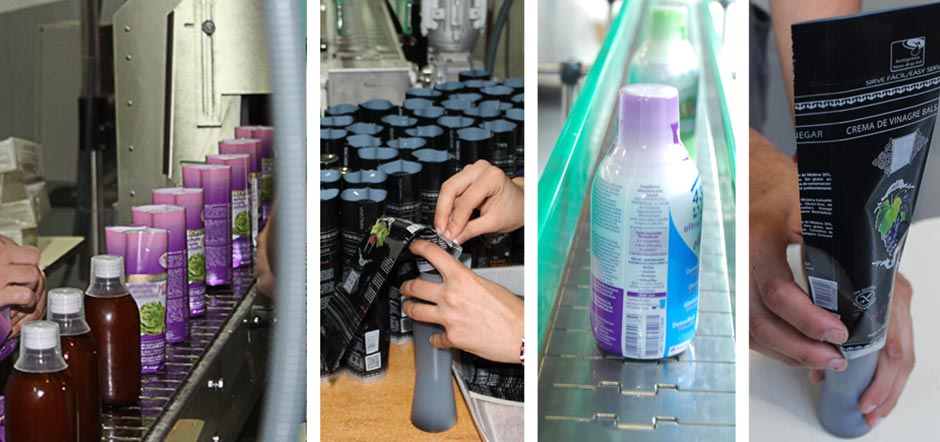The Shrink sleeving systems consist of three main components:
the shrink sleeve applicator (or shrink band applicator), the shrink tunnel and the conveyor.
The Shrink tunnels are a critical element in the process: on the market are available different kind of films with various shrinkage ratios, hence different shrink tunnels have been developed in order to respond to the different carachteristics of each film and kind of application. For example, last generation machines are flexible and able to handle thinner or sustainable and eco-friendly label materials without compromising the integraty of the materials.
While deciding which tunnel is the most appropriate for a certain sleeve application, is important to keep into consideration many factors, as: the film type used, the material of the container, if the container is sleeverd empty or full and what kind of product is inside, line speed, environmental and energy consumption concerns.
Based on this considerations, is possible to pick the best fitting choice among the available tunnel technologies: convective, infrared and steam.
Convective Tunnels
Hot air tunnels (also known as convective tunnels) are the most popular due to their ease of use. These tunnels utilize forced hot air to provide the heat energy required to complete the shrink process. The tunnel usually includes a fan of some type to force air through a heat source, resulting in a heated air stream. Many tunnels feature a recirculation system to pull the heated air back into the process, resulting in a more efficient tunnel. In some cases, industrial hot-air guns are used as the heat source and fan.
When using convective tunnels for labels, a multi-zone tunnel is recommended as it permits different temperatures to be used at different process stages. For most applications, it's best to start the shrink process at a lower temperature and finish at a higher temperature. The goal is to start the onset of the shrink process slowly to minimize distortion.
Hot air can be directed to specific areas of the film, which places the heat where and when it is needed in the shrink process. Hot air offers a more aggressive heat than steam, requiring a careful assessment of the packaging material's heat resistance. Hot air tunnels may have a larger footprint than steam tunnels, depending on the application.
Infrared Tunnels
Radiant heat tunnels (also known as infrared tunnels) utilize radiant heat to provide the energy required to complete the shrink process. These tunnels utilize various energy sources from quartz panels, tubes and, in some cases, standard calrod-style heating elements with reflectors.
Infrared tunnels normally are used in conjunction with other types of tunnels as a finishing unit. Infrared is similar to steam in that it provides a consistent temperature and a high heat energy transfer.
These tunnels are the most aggressive in terms of shrink and are ideal for neck bands on containers such as wine bottles. Radiant heat tunnels are used for fast shrink on packaging not affected by more robust heat.
Steam Tunnels
Steam tunnels provide the best results for most sleeve label applications. Steam tunnels offer the most uniform heat — 360° around the package — which means overall even shrinkage of the film. The benefit of steam is that the shrink process occurs at a low temperature, the temperature is consistent, and the heat energy transfer of steam is very high. Steam is recommended for most applications in which a sleeve is applied to a liquid filled container, especially glass.
Steam tunnels use live steam to provide the energy required to complete the shrink process. Most, if not all, steam tunnels require that a separate steam source be used to provide the steam to the tunnel.
Steam is also the least aggressive heat of the three tunnels. Steam tunnels are ideal for round, hourglass, and other non-straight sided packages for this reason — gentle, even, shrinkage. Steam tunnels are also used with containers under pressure, or when low flash point or flammability is a factor.
Environment and product assessments are necessary before specifying a steam tunnel. For example, PET packaging does extremely well in steam tunnels, however these tunnels are not suitable for every application. If the packaging line is in a cold environment, steam will not be applicable. Moreover, these type of tunnels can require a separate steam source and equipment to remove excess moisture and condensation from the area near the tunnel.

Previous: Carrier Tape
Next: T100 series clips
Copyright:@2020-2021
Comments Please sign in or sign up to post.
0
0 of 500 characters used